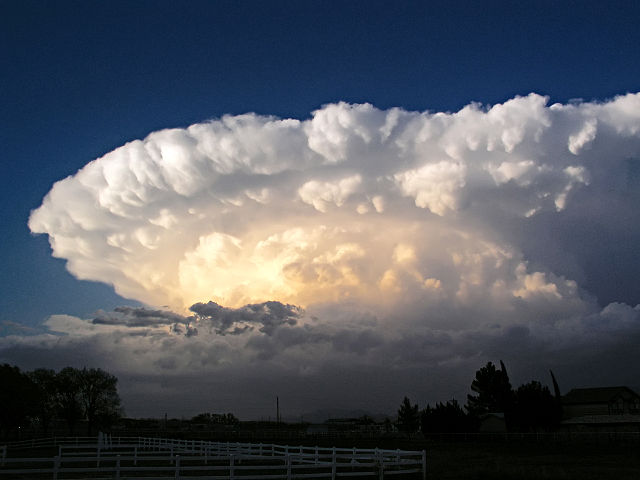As tornado season begins in earnest, and several large tornadoes already have injured and killed Americans this year, especially in Iowa and Texas, the National Oceanic and Atmospheric Administration (NOAA) has put out a list of tornado myths, some of which have been part of the advice given to people for years.
Many people believe that among the best places to be protected from a tornado, if they cannot get into a shelter or a basement because they are caught out in the open, is under bridges. Not so:
Bridges and overpasses are not safe shelters from tornadoes. The structures may enhance the winds and blast flying debris into and under the structure, and into you! A strong tornado may even cause the bridge or overpass to collapse on top of you. If you’re driving and encounter a tornado moving toward you, your best option is to drive in the opposite direction and attempt to get out of its path.
In other words, run away.
ALSO READ: 9 States Running Out of Water
Watching for tornadoes as a means of avoiding them is another tactic that may not work:
Tornadoes do not always have to appear as a visible funnel cloud and can be hidden by heavy rainfall during the day or by darkness at night. Sometimes tornadoes are so wide that you may not realize what you’re seeing until it’s too late. Over the years, there have been numerous reports of tornadoes that are nearly a mile wide.
People are better off facing a thin tornado.
Tornadoes will not damage property or hurt people in large cities. Hopefully, no one is stupid enough to believe that tornadoes have both eyes and the ability to judge where they will appear and travel:
Many cities, including Fort Worth, Dallas, Atlanta, and St. Louis have been struck by tornadoes. However, cities are hit by tornadoes much less frequently than less populated areas. This isn’t because tornadoes have an aversion to big cities, but more likely because there just aren’t that many big cities that happen to be in the path of a tornado. When you compare the area of the U.S. covered by cities to the area that is not, you will find that there is much more open space, especially in tornado alley. This means that cities make for a relatively small target for a tornado to hit.
In terms of tornadoes, Boston and San Francisco are safe cities.
Memorizing these facts may be critical, at least for people who live in Tornado Alley.
ALSO READ: 10 Reasons Why Everything in the World Is About to Change
Are You Still Paying With a Debit Card?
The average American spends $17,274 on debit cards a year, and it’s a HUGE mistake. First, debit cards don’t have the same fraud protections as credit cards. Once your money is gone, it’s gone. But more importantly you can actually get something back from this spending every time you swipe.
Issuers are handing out wild bonuses right now. With some you can earn up to 5% back on every purchase. That’s like getting a 5% discount on everything you buy!
Our top pick is kind of hard to imagine. Not only does it pay up to 5% back, it also includes a $200 cash back reward in the first six months, a 0% intro APR, and…. $0 annual fee. It’s quite literally free money for any one that uses a card regularly. Click here to learn more!
Flywheel Publishing has partnered with CardRatings to provide coverage of credit card products. Flywheel Publishing and CardRatings may receive a commission from card issuers.
Thank you for reading! Have some feedback for us?
Contact the 24/7 Wall St. editorial team.

